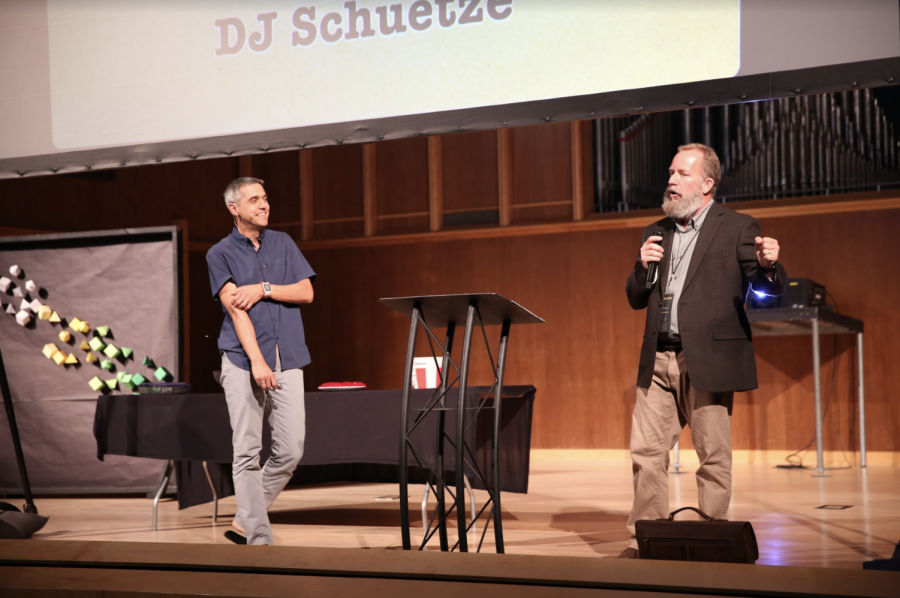"Stories faithfully and bravely told are sacred gifts."
-Rachel Held Evans
Last month doctors announced that they had successfully eradicated all traces of the HIV virus in an infant — marking a huge step forward in the attempt to put an end to the now worldwide HIV and AIDS epidemic.
I pray and hope that we will see the cure for HIV appear within the next 20 years. With this recent development, it seems plausible. Still, I hope that when the time does come when HIV is no longer a death sentence nor a burden on everyday life, we do not quickly forget the early days of the epidemic, the early days where many were terrorized by this horrifying virus.
Or have we already forgotten it? The lack of even an acknowledgment on World AIDS Day, Dec.1, on Biola’s campus seems to indicate that AIDS is not a central worry for evangelical students, and if it is, it remains about those suffering in Africa. Yet before many of us were born, AIDS swept through the United States, wiping out thousands of people — people who were left on their own with little help from the government. These people, their suffering and their stories are a part of American history whether we acknowledge it or not. This era changed the political, social, sexual and religious landscape in America forever.
Which is why the sudden emergence of three documentaries in the past two years is interesting and so very important. “We Were Here,” “How to Survive a Plague” and “Vito” are all about the AIDS crisis in the ‘80s and ‘90s. All give voices to those forgotten. All are heartbreaking. All three are completely different entities, each taking a different angle from which to approach the history of an all too recent American epidemic. Yet the one that continues to move me the most is David Wiseman’s “We Were Here” — perhaps because it feels the most personal.
The film simply chronicles the lives of six people who moved to San Francisco in search of liberation in the early ‘80s only to find themselves amid death and societal rejection. An artist, an activist, a nurse and a flower salesman all share their stories of what it was like to be in the midst of an epidemic where nothing certain was known about the disease. So much of it is quite unlike anything any of us could imagine. It is a quiet but potent film that doesn’t preach, but gives us the unfiltered stories of real people. It is most certainly a sad film, but also hopeful in that it shows how both the gay and lesbian community rose together to support, love and fight for one another when no one would. Some examples in the film are the artist who opened an art store giving the profit to provide hospice care to dying artists, the nurse staying with the sick despite not being fully aware if it was contagious or not, and the man who comforted the dying men and their homophobic relatives alike.
While the film doesn’t purposefully attack the Christian community, the attitude toward Christianity found in the doc is anything but positive. This leads me to another reason this film is important for young Christians to watch: It demonstrates how the Christian reaction to the AIDS crisis created an even wider gap between the gay and Christian communities — a gap that still haunts attempts at bridge building to this day.
Jesus reached out to lepers, the bleeding woman and the paralyzed despite religious and social claims that they were unclean people who should be left alone. The first hospital in Western civilization was built by a nun, for goodness’ sake! Yet Christians not only remained disturbingly distant during the AIDS epidemic, but also spread more fear about the disease, leaving those suffering even more marginalized.
The fact that the gay and lesbian community by itself was able to support its members and fight against oppressive systems is what makes “We Were Here” so inspiring, but there is and should be a hint of sadness, for Christians, that we did not reach out when we should have. This can inspire change in us, though. Brian McLaren states in his most recent book that if we allow ourselves to “hear these stories and feel their import … if we bring our secrets into the light, according to the good news we proclaim, we can be redeemed, re-identified and reborn.” By realizing the mistakes of the past we realize the need for reformation and repentance.
“We Were Here” forces us to witness a part of history that is all too often forgotten among young people, both Christian and secular. The film reminds us of the courage of the human spirit, convicts us of our troubled past, demonstrates the pain of life and allows us to hear the stories of those who died and those who survived. Both of whom, thanks to “We Were Here,” are no longer forgotten.







